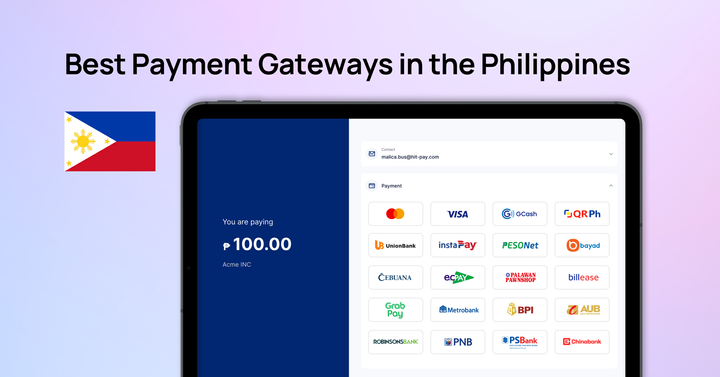What Is a Digital Product? How to Start Selling Profitable Digital Products Through Online Stores
Discover how to turn your skills into a profitable online business by selling digital products like eBooks, online courses, and templates. Learn the steps to choose the right products, set up your store, and effectively market your offerings for success.
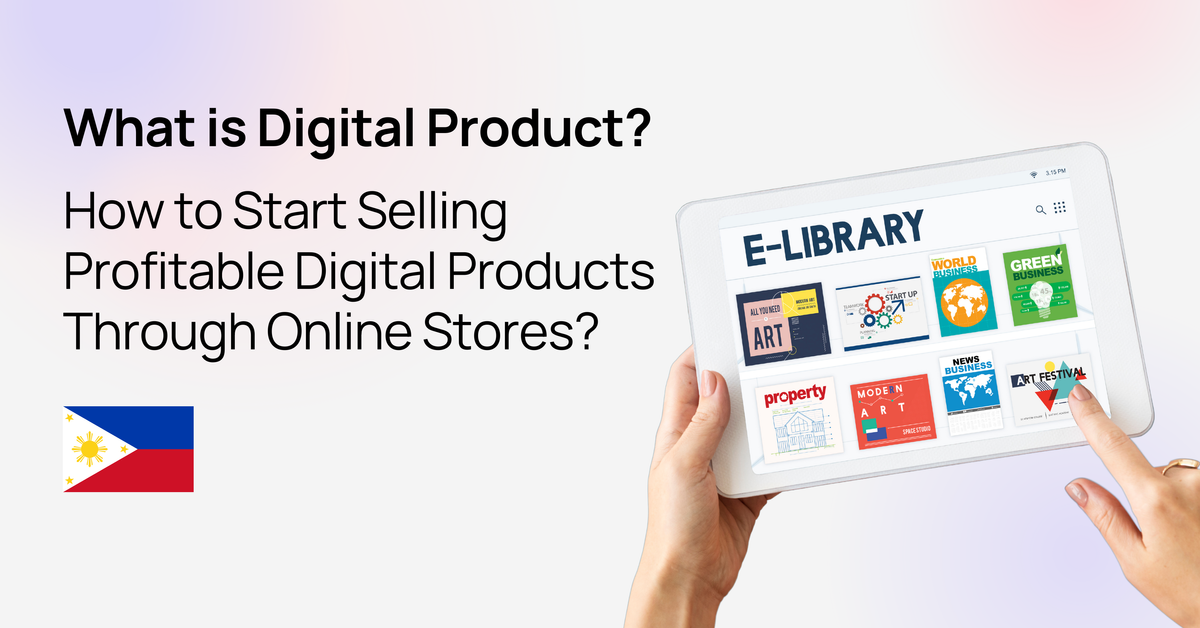
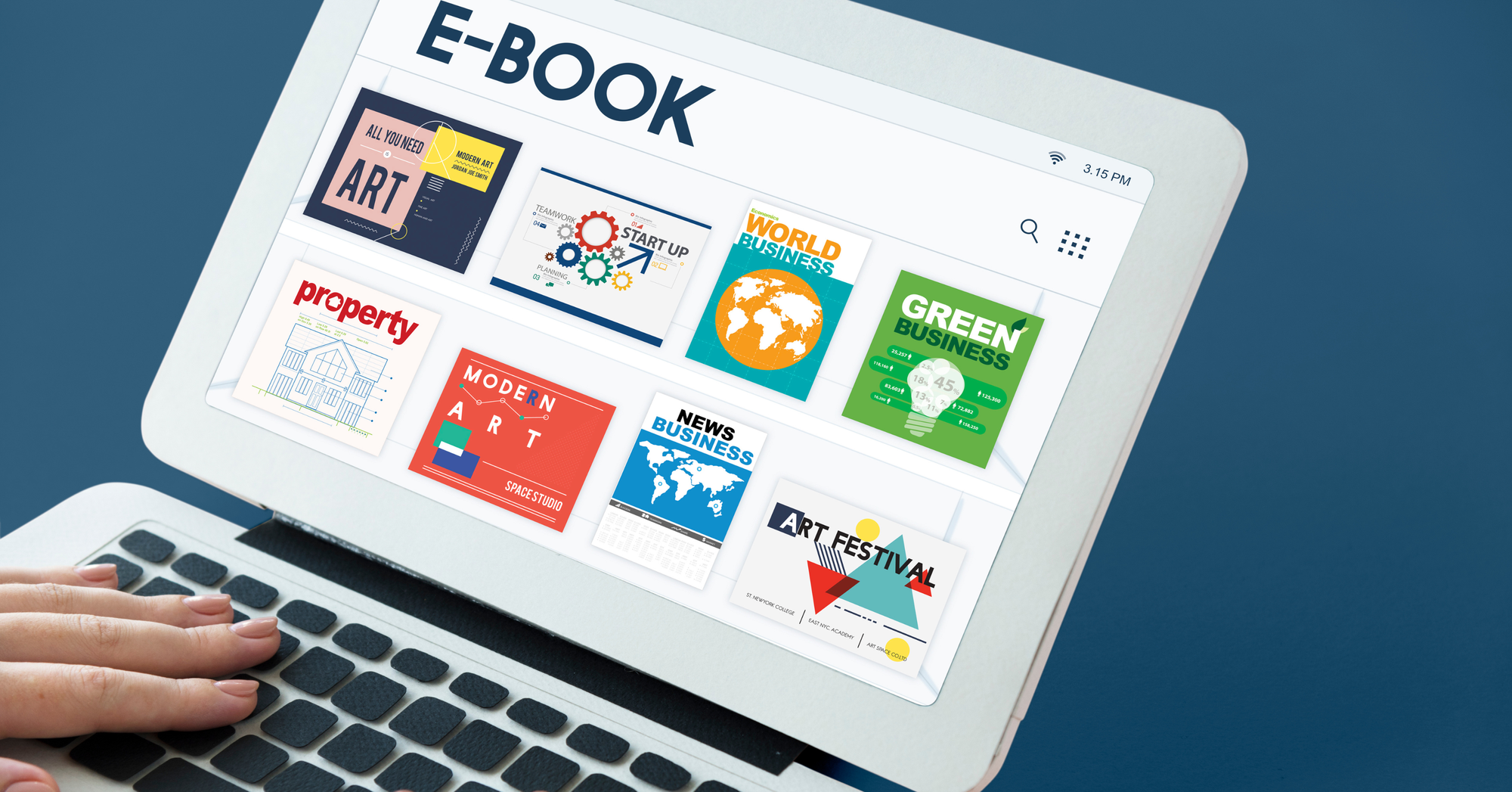
E-commerce growth has made digital products like eBooks and online courses essential for online businesses, especially for new entrepreneurs. These products are easy to distribute and scale, making them ideal for entering the digital market, particularly in high-demand areas like the Philippines.
As more people seek online learning and digital content, the digital goods market presents significant opportunities for businesses to establish or expand their online presence.
With the right tools and strategies, including reliable payment platforms like HitPay, businesses can tap into this growing market and reach customers worldwide with little upfront cost.
In this article, we’ll explore what digital products are and how online stores can be used to sell them. We’ll also look at different types of products, their benefits, and the steps to take to build a successful online business.
Key Takeaways
- Digital products are intangible items sold online, including eBooks and online courses.
- Selling digital goods can provide scalable income sources with little overhead.
- Successful digital products cater to niche markets, offering tailored solutions for consumers.
- With the right approach, digital products can reach a global audience, making them a powerful tool for business growth.
What Are Digital Products?

Digital products are non-physical items that are created to be delivered and used electronically. They come in many forms, making them easy to access and share, which is why they have become so popular.
As more people look for convenient and environmentally friendly options, digital products have become an important part of online businesses.
Definition of Digital Products
Digital products include a variety of items like online courses, eBooks, and digital templates. Unlike physical products, they don’t need to be stored or shipped, which makes them easy to deliver and reduces costs.
The demand for digital products is growing fast, with an average of $54 billion spent on digital goods annually. Additionally, digital products are better for the environment because they use fewer resources compared to physical products.
Types of Digital Products
Digital products come in many different forms, each serving different needs:
- Online Courses: Educational programs that are delivered over the internet, allowing teachers to reach students all around the world.
- eBooks: Digital versions of books that can be read on devices like tablets or smartphones, making reading convenient and portable. The eBooks market is set to grow significantly, with an expected increase of nearly 93 million new users between 2024 and 2027, showing how popular digital reading is becoming.
- Printable Digital Products: Items that can be downloaded and printed at home, such as planners, artwork, or colouring pages.
- Digital Templates and Tools: Pre-made designs or tools, like presentation slides or graphic design elements, that help people complete tasks more easily.
- Licensed Digital Content: Creative materials such as stock photos, music tracks, or videos that can be sold or licensed for use by others.
- Memberships: Subscriptions that give people access to a collection of digital products or services, often including special or exclusive content.
Examples of Digital Goods
Why Should You Sell Digital Products Online?
Selling digital products online offers many advantages for entrepreneurs and creators, making it a great way to succeed in the competitive online market.
Benefits of Selling Digital Goods
Digital products offer several key benefits, with one major advantage being their low production costs, as they don't require raw materials, physical storage, or shipping. This makes it significantly cheaper and more profitable to start and run a digital store compared to a physical one.
The reduced overhead costs translate directly into higher profit margins, allowing sellers to retain more of their earnings. Additionally, without the need to manage inventory or handle logistics, sellers can focus more on creating and marketing their products, further enhancing profitability by reaching a wider audience and scaling their business with ease.
Another benefit is the potential for high earnings. Once a digital product is made, it can be sold repeatedly without additional production costs, allowing sellers to keep more of their profits. This is different from physical goods, which usually involve ongoing costs for manufacturing and shipping.
Comparison: Digital Products vs. Physical Products
Digital products have clear advantages over physical ones. They can be sold again and again without ever running out, so customers can always access them. Digital products also don’t wear out or break, making them more durable and easier to sell over time.
On the other hand, physical products need to be stored and shipped, which can make selling them online more complicated. The extra steps involved with physical goods can make the process harder and may reduce the benefits of selling online.
Market Demand for Digital Products
The demand for digital products is increasing quickly, especially in areas like online learning and digital media. In the Philippines alone, the e-commerce market is expected to grow 2.5 times higher by 2025, amounting to $12 billion.
As more people turn to online platforms for education, entertainment, and daily activities, digital products are becoming more popular. This shift offers great opportunities for entrepreneurs and creators to enter growing markets.
As consumers look for convenient and easy-to-access digital solutions, the market for digital products is expected to keep growing. This makes it a good time for those interested in creating and selling digital goods to take advantage of these trends and succeed in the digital marketplace.
How to Identify Profitable Digital Products to Sell

Finding profitable digital products involves using smart strategies and analysing data carefully. By doing thorough research, you can discover opportunities that match what people are looking for.
This guide will help you find ideas for digital products, understand market trends, and choose the best products to sell.
Researching Digital Product Ideas
Start by using online tools like Google Trends and keyword analysis platforms. These tools help you see what people are searching for and which topics are gaining popularity. Websites like Etsy and Skillshare are also useful for identifying trending products and finding gaps in the market that you could fill.
Looking at what successful sellers are offering can give you insights into popular products. By understanding what is already successful, you can create a product that stands out to your target audience and meets their specific needs.
In fact, companies that focus on understanding and addressing customer needs are 60% more profitable than those that don't, highlighting the importance of a customer-centric approach in product development.
Evaluating Market Trends
Keeping an eye on market trends is important to understand which digital products are in demand. Use analytics tools to see which products are doing well on social media and other platforms. This will help you understand what customers like and where you should focus your efforts.
Listening to what people are saying on social media can also give you clues about what they want. This feedback can guide you in developing products that are relevant and appealing.
Finding the Best Digital Product to Sell
When choosing a product idea, it's important to think about what the market needs and what you are good at. Analysing your competitors can help you find areas where there is less competition, allowing you to introduce a product with unique features.
Interestingly, more than 73% of companies spend 20% of their technology budgets on research and data analytics. This shows how important it is to invest in understanding the market. By doing similar research, you can better position your product to meet customer needs and stand out from the competition.
Selecting products that have lasting appeal, like online courses, eBooks, software, or templates, can help you attract a wide range of customers and make steady income in a competitive market.
Steps to Start Selling Digital Products
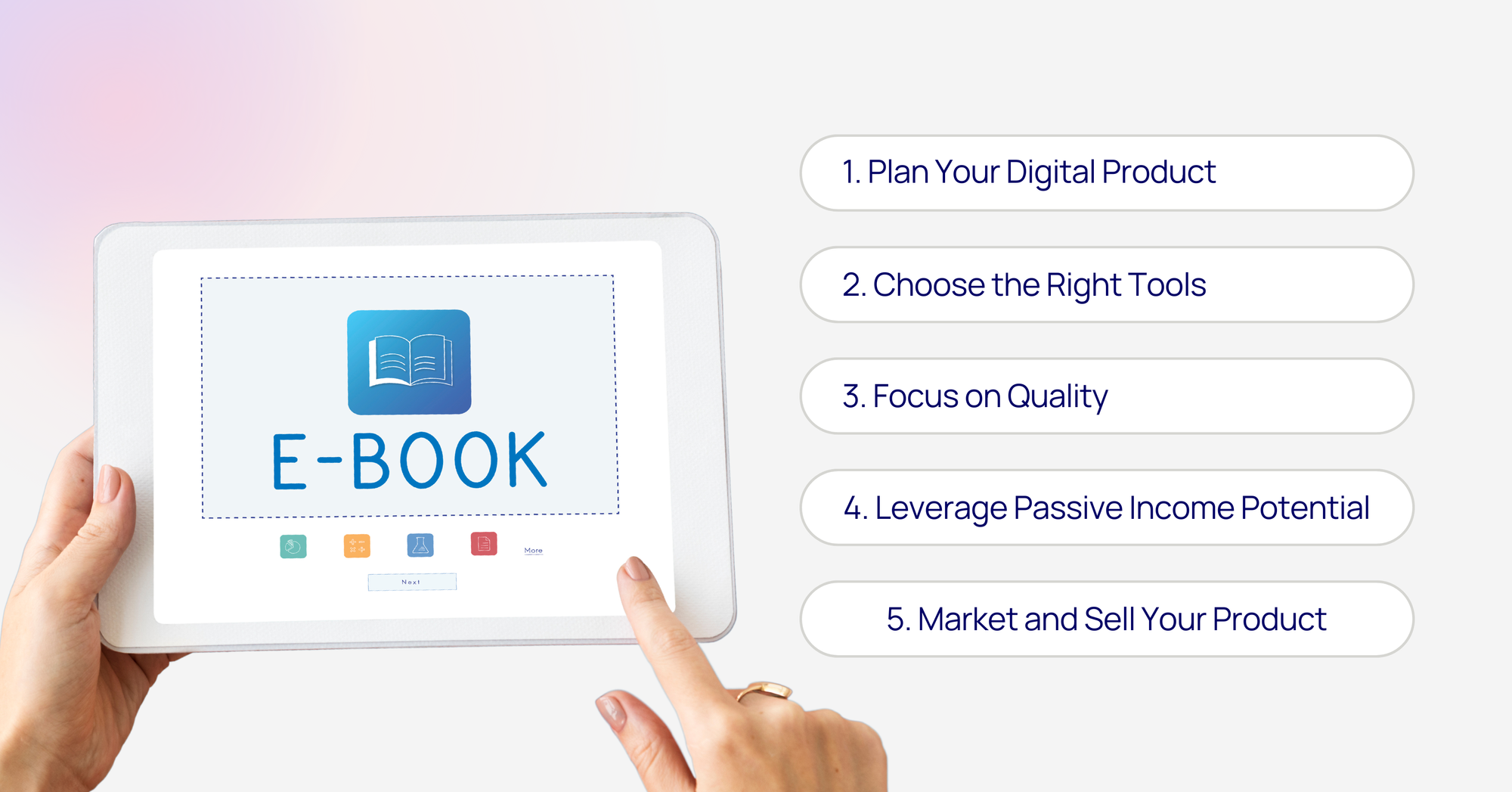
Starting to sell digital products can be an exciting journey, but it requires careful planning to succeed. The first step is to focus on creating high-quality products that people actually want.
This means taking the time to plan and develop your product carefully, whether it’s an eBook, an online course, or a digital template, depending on your skills.
It’s important that your product solves a problem or meets a need in the market. This way, it will be valuable to your customers, increasing its chances of success.
Create and Sell Your Digital Product
- Plan Your Digital Product: Start by identifying a clear idea for your digital product that solves a problem or fulfils a specific customer need. Define the key features, format, and timeline for completion. Determine the type of product you want to create, whether it’s an eBook, online course, template, or digital art.
- Choose the Right Tools: Select the appropriate tools for creating your product. For example, use Adobe Creative Suite or Canva for designing graphics and templates, or tools like Teachable and Thinkific for creating online courses. The tools you choose should align with the nature of your product and help ensure a professional finish.
- Focus on Quality: Ensure your digital product is high-quality and valuable to your target audience. It should effectively solve a problem or meet customer needs, as quality will directly impact customer satisfaction and repeat sales.
- Leverage Passive Income Potential: Digital products offer the advantage of generating passive income, as they can be sold repeatedly without additional production costs. The growing digital art market in the Asia-Pacific region, expanding at 11.9% annually by 2026, demonstrates the increasing demand for these types of products. Similarly, online courses and eBooks have proven to be profitable ventures.
- Market and Sell Your Product: Use effective marketing strategies to reach your audience. Leverage social media, content marketing, and email campaigns to promote your product. Choose the right platforms, such as your website or popular marketplaces, to maximise visibility and sales opportunities.
By following these steps, you can create a successful digital product that not only meets customer needs but also taps into a growing market, allowing for scalable growth and profitability.
Setting Up Your Online Store
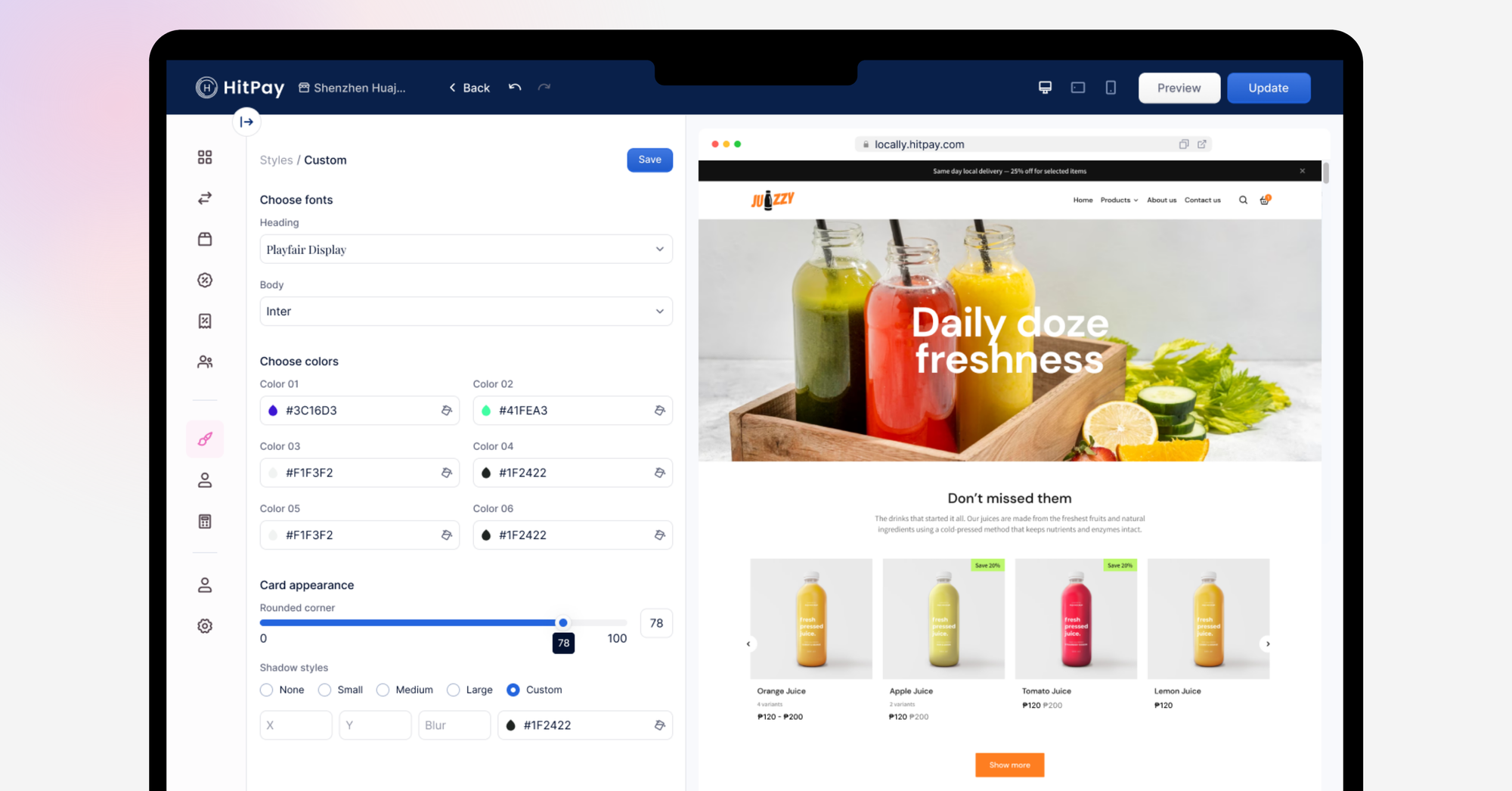
Next, set up your online store. Choose a platform that offers features like sufficient storage, easy payment processing, and a user-friendly design. These features will make shopping on your site easy and enjoyable for customers.
A good e-commerce platform not only helps you display your products attractively but also makes the checkout process smooth, reducing the chances of customers leaving without buying. Research shows that a well-designed online store can significantly increase sales.
HitPay's online store software can also help streamline the payment process, making it easier for customers to complete their purchases.
Choosing Online Marketplaces for Your Products
In addition to your own online store, consider selling your digital products on popular digital marketplaces. Platforms like Etsy, Amazon, and Payhip already have customers looking for digital products, giving you more exposure.
However, keep in mind that these platforms usually take a percentage of your sales. It’s important to balance the benefits of increased visibility with the costs of using these platforms. By selling on both your own store and these marketplaces, you can reach a wider audience.
Promoting your products through social media is also a great way to attract customers. Many successful sellers use platforms like Instagram, Facebook, and Pinterest to increase brand visibility and boost sales. Leveraging social media can help you connect with more potential customers and drive traffic to both your store and marketplace listings.
Marketing Strategies for Digital Products

Simple marketing strategies are essential for selling digital products successfully. By using different techniques, you can make your products more visible, attract new customers, and keep current customers interested.
How to Promote Your Digital Products
To effectively promote your digital products in the Philippines:
- Leverage local influencers and bloggers to reach your target audience.
- Participate in online Filipino communities and forums related to your niche.
- Offer free samples or trials to build trust and showcase product quality.
- Create compelling landing pages in both English and Filipino languages.
- Utilise email marketing to nurture leads and announce new product launches. Ad spending in the email advertising market in the Philippines is expected to reach US$31.60 million by 2024, highlighting the growing importance of this strategy.
- Collaborate with other Filipino digital creators for cross-promotion opportunities.
Digital Marketing Techniques for Online Sales
Boost your online sales with these digital marketing techniques:
- Implement search engine optimization (SEO) focusing on Filipino-specific keywords.
- Use pay-per-click (PPC) advertising on popular platforms like Google and Facebook.
- Create valuable content marketing materials such as blog posts and infographics.
- Utilise retargeting ads to re-engage potential customers who showed interest.
- Optimise your website for mobile users, as many Filipinos primarily use smartphones.
- Implement affiliate marketing programs to expand your reach through local partners.
Utilising Social Media to Sell Digital Goods
Maximise social media platforms to sell your digital products:
- Engage with your audience on Facebook, the most popular social network in the Philippines
- Use Instagram to showcase visually appealing aspects of your digital products
- Leverage Twitter for real-time customer engagement and support
- Create and share valuable content on LinkedIn to reach Filipino professionals
- Utilise TikTok to create trendy, short-form video content appealing to younger audiences
- Engage in social listening to understand Filipino customers' needs and preferences
- Use social media advertising tools to target specific demographics within the Philippines
By implementing these strategies across various social media platforms, you can effectively reach and engage with your target Filipino audience, ultimately driving more sales for your digital products.
Tips for Successful Digital Product Sales
To succeed in selling digital products, focus on both quality and clear communication. Make sure your digital products are well-made and thoroughly researched.
Provide clear product descriptions that help customers understand exactly what they are buying. Adding attractive visuals that highlight the benefits of your products can also make a big difference.
Best Practices for Selling Digital Products Online
Start by creating a professional online presence. A strong, visually appealing brand can help you connect with your target audience and show what your business stands for.
Building real relationships with customers is important, and you can do this by responding quickly to their questions and offering excellent customer service.
Customer Engagement Strategies
Keeping your customers engaged is key to long-term success. Send follow-up emails to get feedback and share helpful tips.
89% of consumers are more likely to make another purchase after a positive customer service experience, so focusing on building strong relationships with your customers can significantly boost repeat sales.
Regular communication, personalised recommendations, and addressing customer needs promptly can help create loyal customers who return again and again.
Handling Sales and Customer Support
Great customer service is crucial for keeping customers happy. Make sure your customers can easily find help through FAQs or chatbots. Train your team to solve problems quickly so that customers feel supported.
Staying in touch with customers even after a sale can encourage them to come back and buy again.
Using these tips can make your sales smoother, improve how you deliver products, and increase customer loyalty. Aim to make a great experience for your customers from start to finish.
Get Started With HitPay’s Secure Online Store
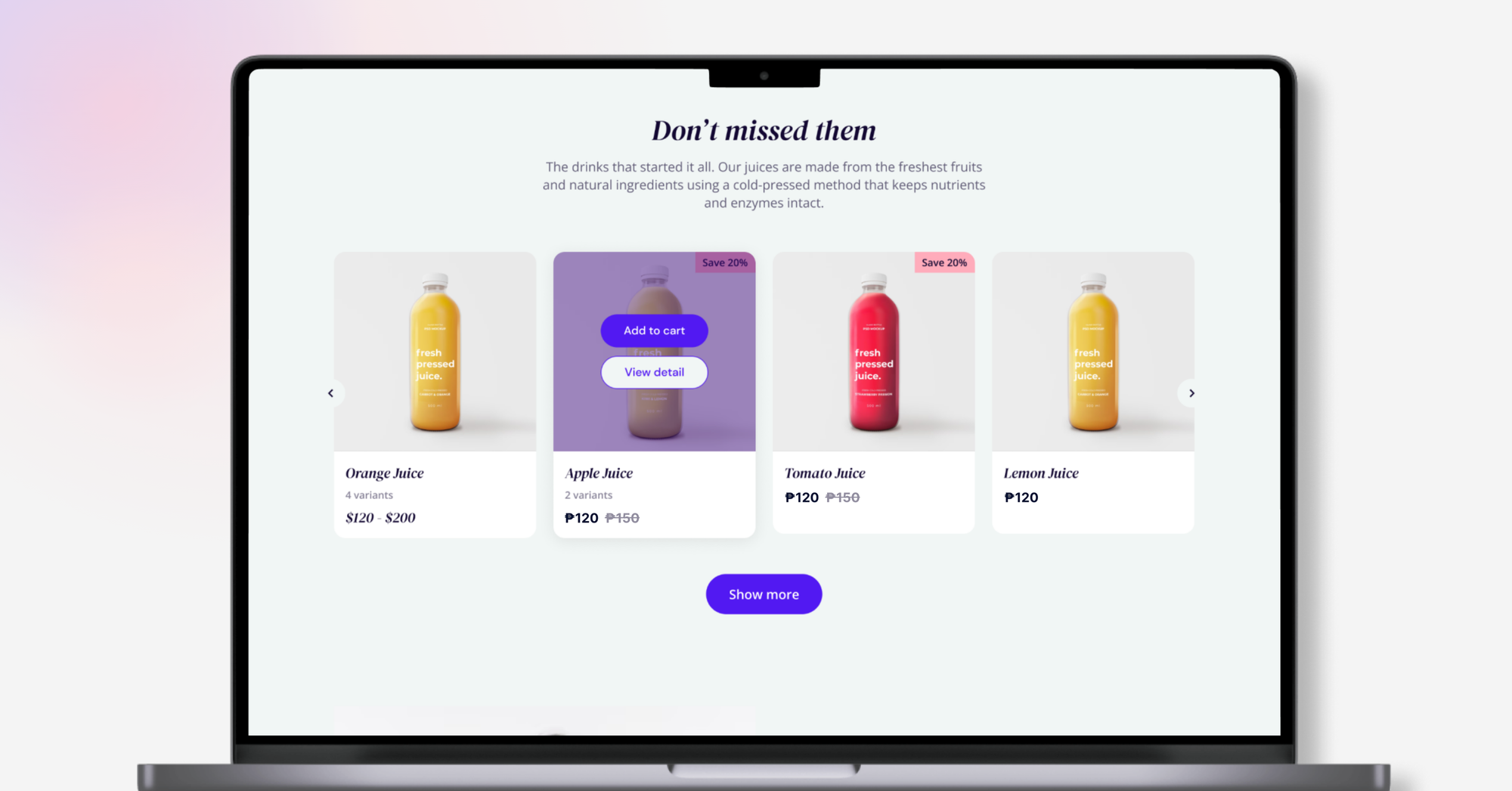
Selling digital products presents a significant opportunity in today’s digital landscape. By gaining a solid understanding of digital products and effective marketing strategies, you can position your business for success.
Leveraging user feedback and data analysis is crucial in refining your products. Understanding what your customers like and what they don’t can help you make improvements that keep you ahead of the competition.
By prioritising customer needs and applying smart marketing tactics, you can do more than just meet expectations—you can exceed them. Utilising the right tools and strategies will help you establish a strong online presence, attract new customers, and build a thriving e-commerce business.
Try HitPay’s Online Store for free today. If you're a customer who has questions about paying with HitPay, feel free to contact us on our website.
Frequently Asked Questions About Digital Products
What qualifies as a digital product?
Digital products are things you can't touch that you get online. They include things like online courses, eBooks, software, music, and digital templates.
What are the benefits of selling digital products online?
Selling digital goods has many perks. You save on costs, make more money, can automate tasks, and it fits well with other products or services.
How can I identify profitable digital products to sell?
Find profitable digital products by looking at online trends with tools like Google Trends. Check out what's popular in digital markets and see what others are selling.
What steps should I take to start selling digital products?
First, make and improve your digital product. Then, set up an online store with an e-commerce platform. Think about selling on places like Etsy or Amazon too.
What marketing strategies are effective for digital products?
Good marketing includes sending out emails, making your website easy to find with SEO, using ads online, and being active on social media to reach customers.
How can I enhance customer engagement for my digital products?
Improve customer engagement by making sure your products are top-notch. Send them helpful emails, host webinars, and talk with them on social media.


